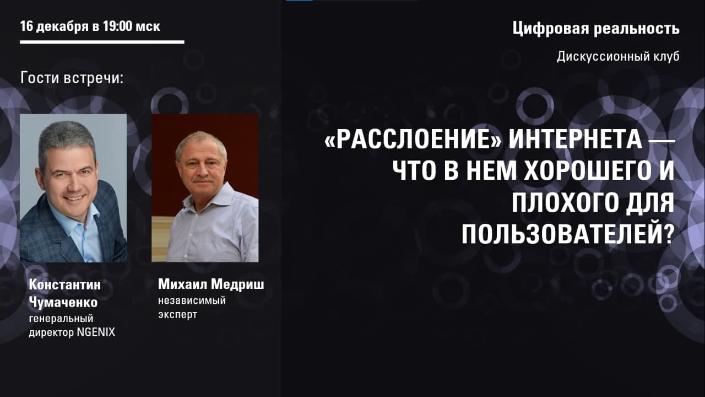
On December 16, the Digital Reality Discussion Club held its last meeting of the year, devoted to slicing up the internet.
Pressing issues related to the fragmentation and balkanization of the internet (the transformation of the global network into many local networks, the boundaries of which are artificially determined, for example, at the level of national laws of states), as well as technological and digital sovereignty, repeatedly came up during the club meetings. However, all these issues were discussed mainly from a political point of view, while the technical side was ignored.
At the latest meeting, the participants talked about why internet fragmentation remains invisible to the average user, and how it influences the further development of the internet and changes its appearance. They discussed what network slicing is and how layering occurs at the network level (IPv4 and IPv6), why TOR and the dark net appeared, who controls traffic and whether the basic principle of network neutrality is violated, among other topics. This time the guests of the meeting were NGENIX CEO Konstantin Chumachenko and independent expert Mikhail Medrish.
“Today’s meeting turned out to be a little difficult, since we discussed a lot of technical issues, but this is important because most of the users, as a rule, do not think about what is going on inside the internet, and how complicated everything is. Usually we do not notice this, but all the evolutionary processes of internet development and its use take place precisely at the level of technology,” noted Ilona Stadnik, the moderator of the meeting and curator of youth projects at the Coordination Center for TLD .RU/.РФ.



